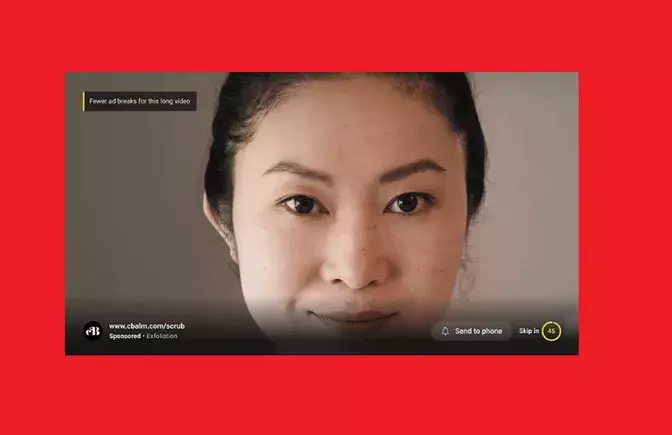YouTube has announced its decision to incorporate longer ad breaks into its Connected TV experiences in order to provide viewers with bigger blocks of uninterrupted content. Following a research study that revealed 79% of YouTube viewers prefer grouped video ads over shorter ad slots, the platform initiated an experiment to test the impact of longer ad breaks. The initial results showed a 29% increase in uninterrupted viewing blocks, prompting YouTube to expand this strategy further.
According to YouTube, the expansion of fewer, longer ad breaks on Connected TV allows viewers to enjoy 50% longer viewing sessions before encountering the next ad break. Viewers still retain the option to skip to the next ad within an ad pod, and they can skip an ad after five seconds if it is not relevant to them. This improved viewing experience benefits both viewers and advertisers, as it minimizes interruptions while providing more opportunities for advertisers to connect with their target audience.
While the concept of longer ad breaks seems promising in terms of enhancing viewer experience and advertiser reach, there are valid concerns regarding viewer engagement and ad response rates. The potential for viewers to become distracted or disengaged during extended ad blocks, especially with the presence of countdown timers, raises questions about the effectiveness of this strategy. It remains to be seen whether viewers’ preference for longer ad blocks aligns with actual engagement and response rates.
For YouTube marketers, monitoring the performance of ads within longer ad blocks is crucial to understanding the true impact on viewer awareness and engagement. While traditional metrics may not accurately capture the effectiveness of awareness-based promotions, tracking viewer behavior and responses can provide insights into the success of this new approach. With the shift towards longer ad breaks, marketers must adapt their strategies to align with evolving viewer preferences and consumption habits.
YouTube’s decision to introduce longer ad breaks on Connected TV reflects a strategic shift towards enhancing viewer experience and maximizing advertiser reach. By providing viewers with fewer, longer ad breaks, YouTube aims to create a more seamless viewing experience while offering advertisers greater opportunities for engagement. While the implications of this strategy remain to be fully understood, YouTube marketers should closely monitor their ad performance and adapt their strategies accordingly to capitalize on the evolving landscape of digital advertising.


Leave a Reply